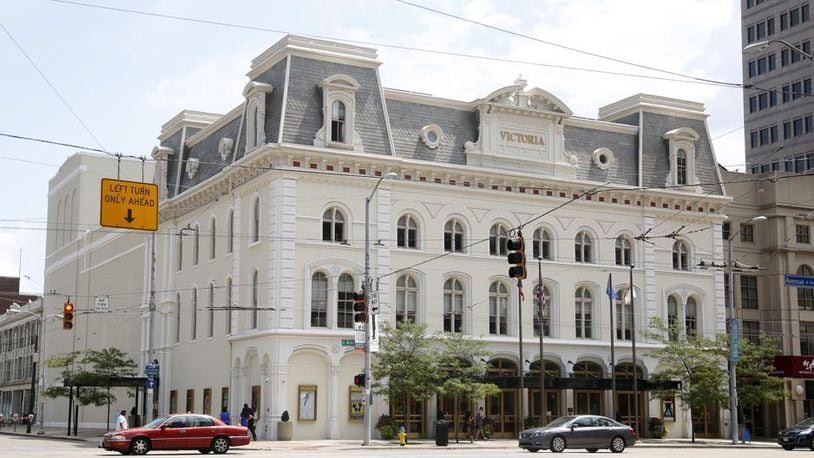Assembling leaders from various arts groups was an essential step. After all, the arts continue to be the critical lifeblood for downtown Dayton’s financial stability and artistic vitality. In addition to more than 300 performances playing downtown each year, a 2017 study revealed that non-profit arts and cultural organizations have a $213 million impact on the Dayton region.
“We know how important it is to bring people back downtown – whether for the arts, a Dragons game or an event downtown,” said Sandra K. Gudorf, president of the Downtown Dayton Partnership, to the respective arts leaders. “It’s important to the (arts groups) but also to our small businesses, which have been hanging on by a thread for the last year or so. We’re looking for your energy and creativity.”
Over the course of three informative sessions, which occurred before Gov. Mike DeWine dropped all COVID-19 state health ordinances, subcommittee co-chairs Ty Sutton, president and CEO of Dayton Live, and Julie Liss-Katz, chief government affairs officer for Premier Health representing the Dayton Business Committee, oversaw productive discussion of strategies and initiatives.
The subcommittee included: Meredith Adamisin of Five Rivers MetroParks; Eva Buttavacoli of The Contemporary; Juanita Darden of Third Perk; Eric Deutsch of Dayton Dragons; Matt Dunn of the Montgomery County Arts and Cultural District; Diane Farrell of Dayton Metro Library; Elaine Gounaris of Dayton Art Institute; Lisa Hanson of Culture Works; Ro Nita Hawes-Saunders of Dayton Contemporary Dance Company; Kappy Kilburn of Human Race Theatre Company; Marilyn Klaben representing downtown residents; Jenna Kreitzer of Liberty Tower/The Grande Hall; Tracy Tomme of Boonshoft Museum of Discovery; Lisa Wagner of Levitt Pavilion; and Holly Wiggins of AES Ohio.
“We expanded this group from the footprint of just ‘downtown’ because we realize the impact of Boonshoft and others have,” Sutton said. “The focus of the Downtown Dayton Partnership is downtown, but it’s also on the health of this ecosystem that provides Dayton as a regional draw.”
“Fundraising in this climate has been a challenge for a lot of organizations,” Dunn added. “You have your ‘regular’ donors but the masses you’re trying to reach just aren’t there. Annual appeals also suffer.”
Credit: VTA
Credit: VTA
As the subcommittee carved a meaningful path forward, ensuring constant communication and consistent messaging across the board was a chief hope. At the same rate, there was excitement about fresh opportunities to return to live performance and gatherings bigger and better than before. For example, capitalizing on pent-up demand, attracting new audiences, having the ability to focus on diversity and rethinking old ways of doing things.
Assessing short-term and long-term goals, the subcommittee looked at the potential for presenting more community-wide experiences such as Arts in the City as well as promoting a big push centered around the community being vaccinated, looking to attract regional audiences, especially within a 50-mile radius, and stepping away from territorialism.
For a city the size of Dayton, it’s impressive how many performances and cultural events are offered at any given time, so much so that patrons often find themselves completely overbooked. In order to help erase this habitual trend, the subcommittee decided to create a master calendar marketed to the community.
“As all of us start to (consistently) program again, we need to get back to the consciousness of not programming on top of each other,” Farrell said.
“It would be great to have a master community calendar so there’s not three galas on one night,” echoed Kilburn. “We don’t want to step on each other’s toes.”
With the 2021-2022 arts season on the horizon, leaders were keenly aware of the importance of feeling the pulse of the community. While some organizations grew eager for audiences to return, others felt more cautious.
“In May 2020, (Dayton Live) started the Audience Outlook Monitor,” said Sutton. “We have some really helpful information to see where our Dayton audience is and how they feel about things, how ready they are to come back, how they feel about masks. No matter what decisions we make it’s going to be challenging. Unfortunately, this is going to be our lives for a little bit. I think groups such as ours will be great in order to support each other.”
“When you think about the minority community there is hesitancy in that community, especially in terms of participating in the vaccine initiative,” echoed Hawes-Saunders. “So, I think we have to be very mindful of how we approach the difference when there are no longer state mandates. I think that will be another challenge for us in terms of making sure we have diverse audiences at the various functions we plan to have in the foreseeable future.”
Contact this contributing writer at rflorence2@gmail.com.
About the Author
